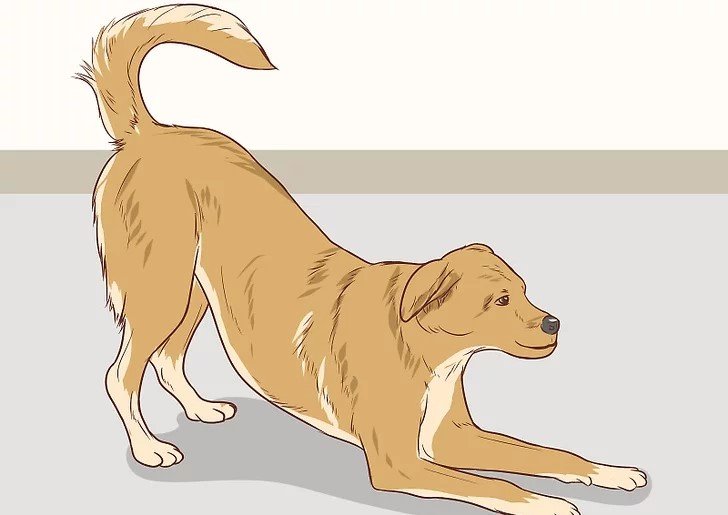
Through posture and body language, dogs show confidence and eagerness to play.
Confident stance: A confident dog stands tall, has its tail up and wagging gently, has relaxed ears, and seems calm. Relaxed eyes have smaller pupils.
- Bowing: Facing you with head and chest sunk low, front legs spread, and rear end and tail up invites play. This is the “play bow”. Owners may misinterpret it as an assault position, although it indicates playtime.
- Other signs of play include hip swings or nudges.The dog swings around another dog and knocks them down with its behind (the part lacking teeth).
- When a dog shows you its rear, it shows trust and may request a scratch. Wiggling its rear shows enthusiasm and warmth.
- A dog displaying a butt in the air, front legs and paws extended, and head near to the ground is likely playing.
- A dog who lifts its paw to touch your knee or other body part seeks attention, a request, or to play.The action starts as a puppy kneading for mother’s milk[8] and grows like a handshake – about bonding and companionship.
- Puppy pawing at the air invites play.
- A dog’s tail in neutral (level with torso or slightly lower) is likely secure and sociable. A dog with a wagging tail and tail up is often mischievous and likely to cause trouble for you or other dogs. It might also mean swatting an animal.
- If your dog is slowly or gently wagging its tail and observing you, it’s comfortable yet aware and eager to play.
-Advertisement-

